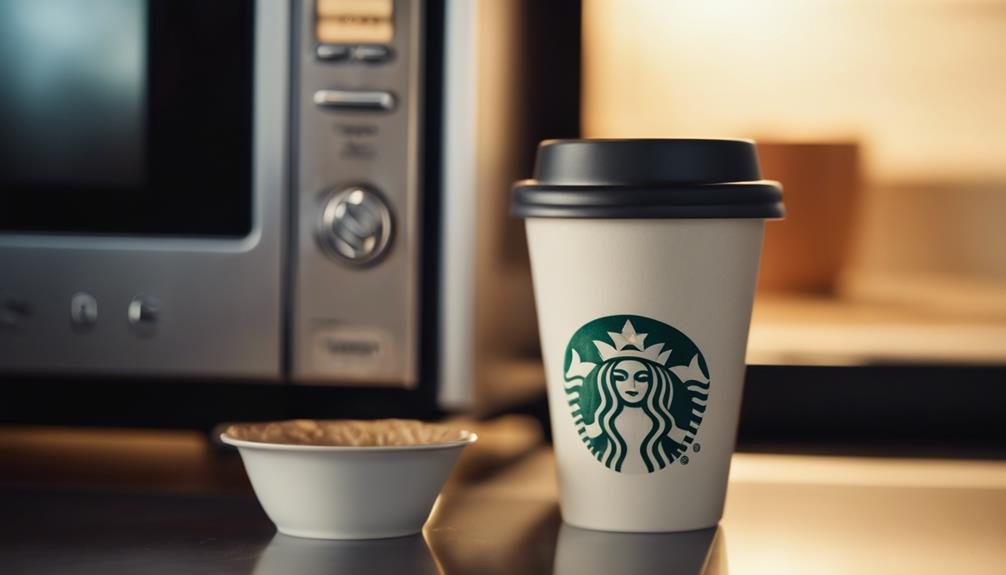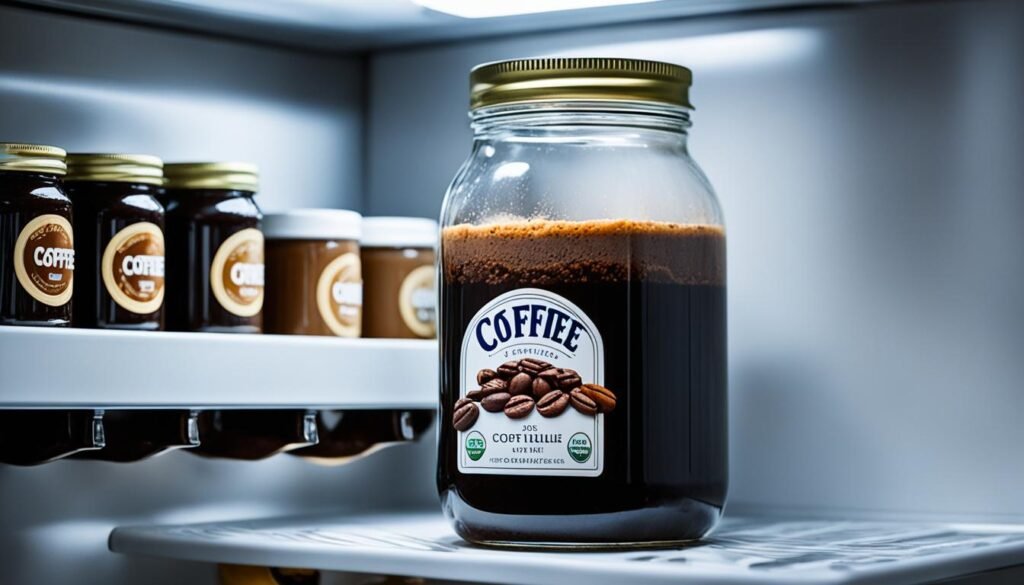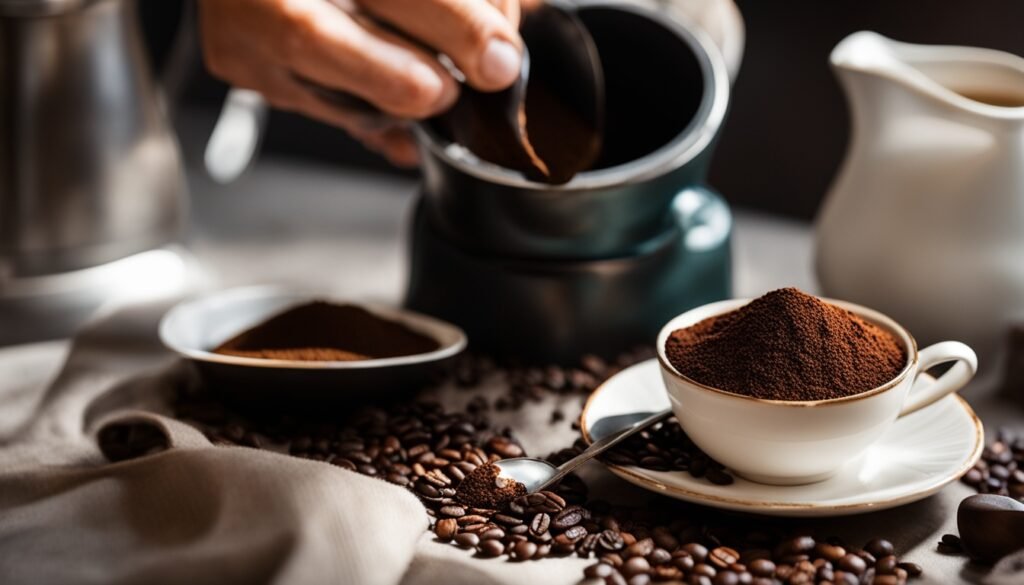Starbucks paper cups, while convenient for on-the-go beverages, pose significant risks when microwaved due to their complex construction and materials. These cups consist of paper outer layers and plastic liners held together by adhesives. When exposed to microwave radiation, the plastic liner may break down, and the glue can fail, leading to cup disintegration and potential chemical release into the drink. This not only compromises safety but also impacts recyclability. To avoid these hazards, it's advisable to transfer beverages to microwave-safe containers or use alternative heating methods like stovetops or electric kettles. Understanding the composition and potential dangers of disposable cups is essential for safe beverage consumption and environmental responsibility.
Microwaves: Inside-Out Heating Explained
Microwave ovens utilize electromagnetic waves to rapidly heat food and beverages from the inside out, a process that fundamentally differs from conventional heating methods. These devices employ microwave radiation, which is less energetic than visible light and is considered safe for food preparation.
The key to this heating mechanism lies in the interaction between microwaves and water molecules present in the food. When exposed to microwave radiation, water molecules in the food begin to vibrate, generating heat throughout the item. Microwave ovens are specifically designed to emit waves that excite these water molecules efficiently.
Surprisingly, objects lacking water content will not heat up in a microwave oven. This inside-out heating approach allows for quick and even warming of food and beverages, making microwave ovens a popular kitchen appliance.
However, this unique heating method also presents challenges when using certain containers, such as paper cups.
Paper Cup Components
Starbucks paper cups consist of several key components that contribute to their functionality and potential microwave hazards. The primary elements include a paper outer layer, a plastic liner on the inside, and adhesive materials that hold these components together. The paper provides structure and insulation, while the plastic liner prevents liquid from seeping through and maintains the cup's integrity.
However, these components pose significant risks when exposed to microwave radiation. The plastic liner, designed to withstand hot beverages, can break down under the intense heat generated by microwaves. This breakdown may lead to the release of harmful chemicals into the drink. Additionally, the adhesives used in the cup's construction are susceptible to glue failure when subjected to microwave heating. This can cause the cup to fall apart, potentially resulting in spills and burns.
Understanding these components is crucial for recognizing why Starbucks paper cups are unsuitable for microwave use.
Microwave Hazards of Disposable Cups

Disposable cups, including those from popular coffee chains, present significant hazards when subjected to microwave heating, potentially compromising both the integrity of the container and the safety of its contents.
The primary risks associated with microwaving disposable cups include:
- Melting or warping of plastic liners
- Glue failure leading to leaks
- Release of harmful chemicals into the beverage
These hazards not only pose immediate safety concerns but also impact disposal options and environmental sustainability.
When disposable cups are damaged by microwave use, they often become unsuitable for recycling, exacerbating their environmental impact. Additionally, the potential release of chemicals from heated plastic liners can contaminate both the beverage and the environment upon disposal.
To mitigate these risks, it is important to use microwave-safe containers and avoid heating disposable cups. By doing so, consumers can safeguard their safety, preserve the recyclability of disposable cups, and minimize their environmental footprint.
Reusable Cup Safety Guidelines
When considering the use of reusable cups in microwaves, it is important to follow specific safety guidelines to prevent potential hazards and guarantee peak performance.
Microwave precautions for reusable cups include checking for safety labels that explicitly state 'microwave-safe.' Ceramic options are generally a reliable choice for microwave use, but it's vital to verify their safety status.
Before microwaving any reusable cup, make sure it's free from metallic paint or rubber gaskets, which can pose risks. Starbucks offers microwave-safe reusable mugs and travel cups, but always double-check the label.
Some cups may appear safe but contain hidden hazards incompatible with microwave use. Plastic cups can be microwave-safe, but confirm this on the packaging or label.
Alternatives for Microwave Use

For those seeking safe alternatives to microwaving Starbucks paper cups, several options exist that prioritize both convenience and safety. When looking for eco-friendly options and heating alternatives, consider the following:
- Invest in a microwave-safe reusable Starbucks cup
- Transfer your beverage to a ceramic mug before heating
- Use a stovetop or electric kettle to reheat your drink
These methods guarantee that you can enjoy your favorite Starbucks beverages without compromising safety or environmental concerns.
Microwave-safe reusable cups are designed to withstand the intense heat generated by microwaves, while ceramic mugs provide a reliable and durable option for reheating.
Stovetop or electric kettle methods offer precise temperature control and are suitable for various types of drinks.
Conclusion
The potential dangers of microwaving Starbucks paper cups underscore the importance of understanding microwave safety. Like a ticking time bomb, these seemingly innocuous vessels can pose significant risks when subjected to microwave radiation.
By recognizing the complex composition of disposable cups and their incompatibility with microwave technology, consumers can make informed decisions about reheating beverages. Embracing microwave-safe alternatives and adhering to proper usage guidelines guarantees both convenience and safety in daily coffee consumption, ultimately promoting a more responsible approach to modern coffee culture.












